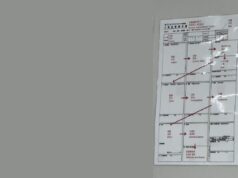IndustryWeek : A Primer on A3 Reports: Better Thinking for Stronger Organizations
I can understand the appeal of A3 reports… putting all of the relevant information and problem solving info on a single 11″x17″ sheet of paper is compelling and helpful.
But I have to admit I've never really used formal A3s, at least in the classical form that's taught in books and seminars. I think I've been able to incorporate many of the elements of the A3 kaizen approach in different ways:
- Challenging people to state a problem statement, not just an idea
- Using the “5 Whys” problem-solving method
- Anticipating the benefits of changes and how to measure them
- Closing the “PDCA” loop to see if changes had the intended benefits.
Industry Week is doing a webcast:
Dr. Durward Sobek's presentation will explore how the A3 Report can be a useful tool in an organization's PDCA-based management system. Based on his recently released book, Understanding A3 Thinking, Sobek will discuss the core elements of A3 thinking, the basics of A3 Reports and report writing, and a general yet highly effective approach to solving problems in an organizational context. This webcast will be of interest to anyone wanting a primer on how they might be able to us this tool in their daily work, and for managers of any level interested in learning how A3 Reports can enhance their organization's problem-solving capability.
Two books on A3 reports and A3 problem solving:
- Understanding A3 Thinking: A Critical Component of Toyota's PDCA Management System
- A3 Problem Solving for Healthcare: A Practical Method for Eliminating Waste
What are your experiences with A3s? Critical tool? Helpful? Optional? Am I missing out by not using the formal method? What do you think?
What do you think? Please scroll down (or click) to post a comment. Or please share the post with your thoughts on LinkedIn – and follow me or connect with me there.
Did you like this post? Make sure you don't miss a post or podcast — Subscribe to get notified about posts via email daily or weekly.
Check out my latest book, The Mistakes That Make Us: Cultivating a Culture of Learning and Innovation:










Mark;
I’m with you. The use of A3 thinking has been a key element in digging through multiple layers with root cause and corrective action analysis. Yet, I have not really partaken in the use of the form (more paper) as the methodology is taught. In my recent travels and observations, I continue to see a critical need for what seems to be a significant lack in problem solving capabilities.
There are some new “one trick Lean ponies” out there and many of them are A3 people. A3, A3, A3, all the time, that’s all you need.
Respectfully….. BS.
Wow, not sure why you need an A3 to challenge a problem statement, ask “why?” five times, anticipate the benefits of change and to see if changes had the intended benefit. Plenty of problem solving frameworks out there that do this to without the artwork.
I know Toyota used these religiously but I know of at Least 1 teir 1 Toyota supplier that has gratefully stopped using them in the past two years.
I never understood why the A3 trainers wanted me to draw cutesy Japanese style cartoons. Just describe the problem with words, sheesh.
I thought I was the only anti-A3 person. Seems like you get voted off the island for questioning something Toyota uses.
Like the last person said, I can use the components of “A3 thinking” for the same results.
To me, calling it an A3 report (A3 is just a size of paper) is like calling something “the 10 AM meeting.”
I really like the A3 tool, but it helped us out in a different manner. People didn’t want to do any true problem solving because we would require a huge report (25-30 pages). Once we redefined it as an A3 so the reporting writing was short and we were able to post the results in the department, more and more people started problem solving. We had a good structure for problem solving. The A3 helped us generated enthusiasm and excited for problme solving.
I think that the underlying question behind this question is critical. Which is: can good tools be used for bad results and bad practices? I am familiar with A3 reports, and they represent a powerful, elegant, way to structure the PDCA process, which is key to the discipline of lean. In order to write an A3 report effectively, the author must draw from a number of critical lean practices, such as going to the gemba and carefully observing the real work, practicing root cause analysis, diligently revising and iterating one’s findings through discussion with the people doing the work, and so forth; all within the context of an organization with true hoshin kanri.
Mindless insistence on filling in the boxes correctly will undermine the effectiveness of an A3 report, as they would disable the intent of any effective tool. But using this simple report as a way of forming a common way of framing and tackling problems, as a way of creating effective countermeasures, is without a doubt a useful practice….
Wow, never thought of going to the gemba, carefully observing real work, practicing root cause analysis, diligently revising and iterating one’s finding through discussion with people doing the work, and so forth in order to make improvements [searing sarcasm].
And now I know why my organization’s Hoshin Kanri isn’t working. We don’t have any A3 sized paper!!!!
And gee, Mr. “searing sarcasm,” it takes such courage and integrity to leave bitter comments anonymously on a blog like this. I am sure that you’re a delight to work with! It must be a treat to be on your team!!